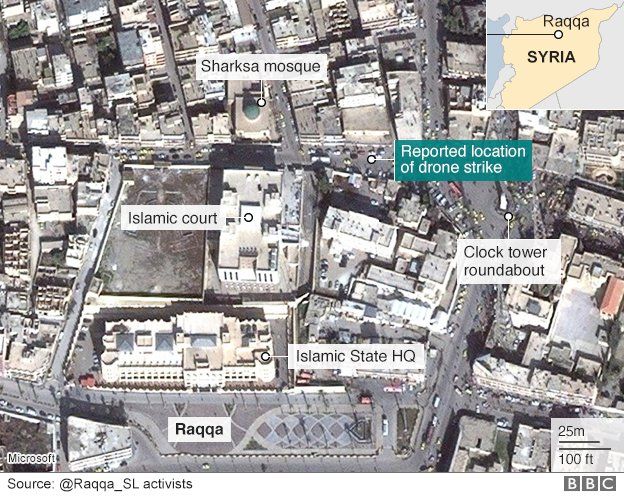What Is It About Islam?
"It is a very small solace to learn that Jihadi John may have been killed by the U.S. government. His death does not bring Jim back."
"If only so much effort had been given to finding and rescuing Jim and the other hostages who were subsequently murdered by ISIS, they might be alive today."
John and Diane Foley, parents of American journalist James Foley
"This development doesn't change anything for us; it's too little too late. Our son is never coming back."
"More importantly, today, we remember Steven's remarkable life, his contributions and those of James Foley, Abdul-Rahman Peter Kassig, Kayla Mueller, David Haines, Alan Henning, Kenji Goto, and everyone else who has suffered at the hands of ISIS."
Art and Shirley Sotloff, parents of Steven Sotloff, American-Israeli journalist
 |
|
|
Their murders, celebrated on video for the entire world to see through the Internet, were horrifying events recalling the videoed beheading of Daniel Pearl, the 38-year-old Wall Street Journal reporter who was kidnapped in Karachi, Pakistan in 2002, who refused an offer of sedation before his throat was cut and he was beheaded by Arab jihadis who gloated over the fact that they had committed a deadly atrocity against a Jew.
It took another decade before the public relations/entertainment arm of the Islamic State of Iraq and the Levant brought beheading to the fine art that they cultivated. Through which they succeeded in revulsing the world community and at the same time giving huge satisfaction to those averse to democratic freedoms and liberty, enabling ISIL to recruit from among disaffected Muslims living their otherwise-ordinary lives in comfort in the West, hankering to see some gratifying action abroad.
Born in Kuwait, Mohammed Emwazi was brought with his immigrant-family to London. He was all of six years old at the time, so his radicalization was entirely due to any exposure he experienced while a citizen of Britain. He received his education in London and was fluent in both Arabic and English. After completing a degree in computer science at University of Westminster he went abroad to Tanzania, Amsterdam and Kuwait.
In 2013 his parents reported him missing, and four months later British police advised his family that he had entered Syria. Those who knew him from his London days describe him as a polite, 'fashionable' young man steeped in his faith. Isn't that always the way? People who depart from the path of the civilized social compact are always recalled as decent individuals, with endearing human qualities.
If the man later known as "Jihadi John" had any endearing human qualities before leaving for Syria they appear to have been subsumed in his quest for jihadist payback to the West for all the harm his life in Britain did to him and his family. His became the public face of ISIL medieval bestiality when he held up a crude, serrated knife to ensure it was well understood that when he began to hack off the head of a victim it would result in absolute pain and suffering.
His entire face was not visible, since he was partially masked, clad all in black, a sinister, menacing figure eager to demonstrate with cool calm that he was more than equal to the task of taking the lives with utmost cruelty of those ISIL deemed unfit to live. His British accent initially horrified as the absolute reality of someone born and raised with opportunity chose to become instead a fascist jihadist representing a terrorist ideology.
Identification was made and his identity confirmed. As a symbol of the implacability of Islamist hatred and violence, he played the part convincingly simply because he was who he purported to be. "Implications? None beyond the symbolism", an expert on extremism at King's College, London tweeted. The director of King's College's International Centre for the study of Radicalization pointed out that he was a "low-ranking officer" of Islamic State.
On the other hand, placed in charge of the facility in the ISIL capital Raqqa, where hostages are held before ultimate disposal, his commitment to his role and his relish in carrying out his duties reflected a man whose total surrender to the kind of Islam that has taught the world that humankind cannot stoop too low in fomenting fear and disgust, in committing the most macabre and stunningly cruel atrocities was not beyond his capabilities.
Perhaps there are too enthusiastic celebrations at the thought this arch villain whose primal thirst for blood is dead may be too good to be true. Since, according to an American U.S. defence official it is only believed that of the two people in the targeted vehicle who were killed, he was one. "We don't have jackpot", the official stated, cautioning that in cases such as this where DNA evidence is not in hand, definitive confirmation may not be possible.
"We could potentially never know", he stated, baldly. But Mohammed Emwazi's exploits in murdering Steven Sotloff, Abdul-Rahman Kassig, an American aid worker, as well as David Haines and Alan Henning, British aid workers and Japanese journalist Kenji Goto, caused huge anguish to their families and their countrymen. He also killed in like manner a Syrian soldier, during a mass execution event.
If anyone ever deserved to be blown to smithereens, it is certainly this man, if only as a symbol of the detestation in which he is held by normal human beings for the devastation he has brought to humankind in his very own, very Islamist way.

Labels: Atrocities, Islamic State, Justice

<< Home